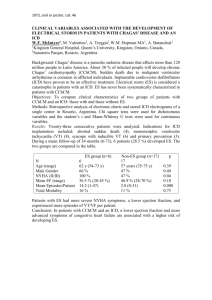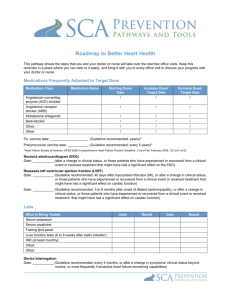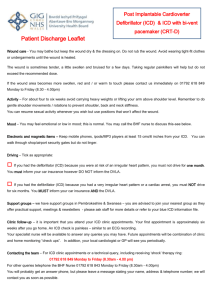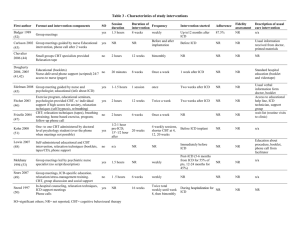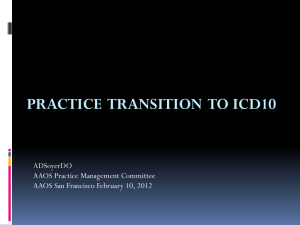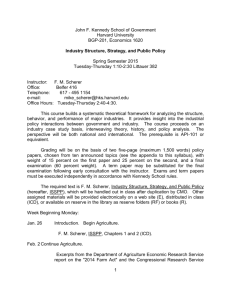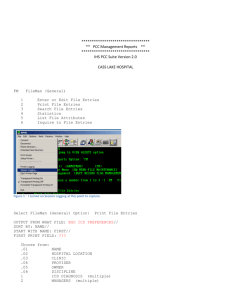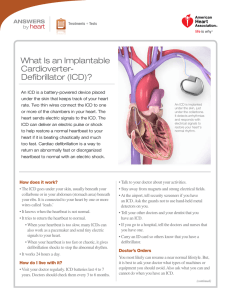risk factors and indications for icd therapy
advertisement
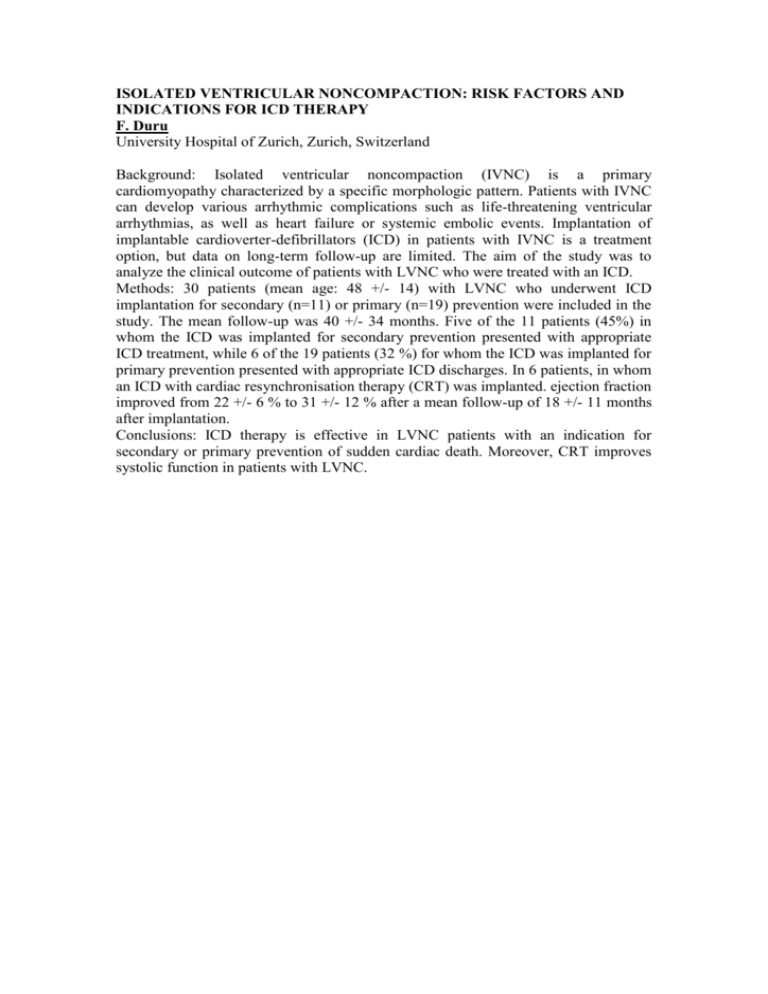
ISOLATED VENTRICULAR NONCOMPACTION: RISK FACTORS AND INDICATIONS FOR ICD THERAPY F. Duru University Hospital of Zurich, Zurich, Switzerland Background: Isolated ventricular noncompaction (IVNC) is a primary cardiomyopathy characterized by a specific morphologic pattern. Patients with IVNC can develop various arrhythmic complications such as life-threatening ventricular arrhythmias, as well as heart failure or systemic embolic events. Implantation of implantable cardioverter-defibrillators (ICD) in patients with IVNC is a treatment option, but data on long-term follow-up are limited. The aim of the study was to analyze the clinical outcome of patients with LVNC who were treated with an ICD. Methods: 30 patients (mean age: 48 +/- 14) with LVNC who underwent ICD implantation for secondary (n=11) or primary (n=19) prevention were included in the study. The mean follow-up was 40 +/- 34 months. Five of the 11 patients (45%) in whom the ICD was implanted for secondary prevention presented with appropriate ICD treatment, while 6 of the 19 patients (32 %) for whom the ICD was implanted for primary prevention presented with appropriate ICD discharges. In 6 patients, in whom an ICD with cardiac resynchronisation therapy (CRT) was implanted. ejection fraction improved from 22 +/- 6 % to 31 +/- 12 % after a mean follow-up of 18 +/- 11 months after implantation. Conclusions: ICD therapy is effective in LVNC patients with an indication for secondary or primary prevention of sudden cardiac death. Moreover, CRT improves systolic function in patients with LVNC.
